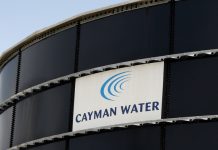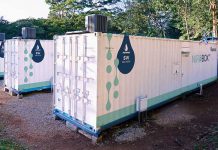A reader recently submitted the following comment that I felt would be ideal to talk about here.
I am wondering if you have any opinions (hopefully informed ones) about how Katrina, and now Rita, have/will affect PBW’s profitability in the near and/or long term? I’m thinking of moving a few thousand I currently have in US savings bonds into a green energy fund.
I can’t address whether you should or shouldn’t invest your money into PBW since every person has a specific tolerance to risk and I’m not a registered investment advisor. What I can do is try to provide information so you can make your own intelligent choice of what to do. The first step to answer this question is to find out what companies are in the PowerShares Clean Energy ETF (PBW.) This fund was created using the Wilderhill Clean Energy index. A quick stop at Yahoo!Finance allows you to look up that particular index: THE WILDERHILL CLEAN ENERGY IND (^ECO). One nice feature of Yahoo is that they list all the components that make up the various indexes they track: ^ECO Components. A look at the PowerShares ETF prospectus shows that they attempt to keep an equal weighting for all the holdings. So if you take the ^ECO component stocks and break them down into say 7 sub-sectors (Power Supply/Batteries, Chemical Suppliers, Fuel Cell, LED, Solar, Alt Fuel, Wind, GeoThermal) you can try to get a breakdown of what sub-sectors will either go up or down based on this short term news in the market. Here is how I feel these various sub-sectors will be affected by Katrina-Rita. Keep in mind this is my short-term estimation on these sub-sectors. I’m bullish on all these sectors when you look out over a multiple-year time horizon. You will see spikes up in the power backup, battery suppliers. Companies like ACPW, CPST, ULBI, APCC (which I may argue shouldn’t be in the Clean Energy Index), and others should see some spikes as investors look at ways to keep the power running when the hurricane blackouts hit. Everytime there are major power outages somewhere in the world , the facilities managers throughout the country look at their own power needs. The interest in these power backup solutions increases in the short term. However, in the long term these are all very capital intensive projects and the interest fades away when they look at the costs involved. Since the majority of the capital budgets for most companies are based on the calendar year, you may see capital budgets include these items for next year and may see a pickup in contracts in the first quarter of 2006. You will also get a similar spike when you look at the fuel cell power backup suppliers. Companies like BLDP, HYGS. But once again these projects are even more capital intensive and real contracts are harder to get. Overall all alternative energy companies will see some spike up as people look at our reliance on the traditional petroleum based power generation solutions. So you will see renewed and continued interest in solar, wind, geothermal, etc. Toyota is also reporting increased demand for hybrid cars because of Katrina.
Toyota Motor Corp. has seen a rise in demand for hybrid vehicles in the United States in the aftermath of Hurricane Katrina as consumers seek more mileage out of $3-gallon gasoline, a top official said on Thursday.
“At the end of last month, we had a 20-hour supply of the Prius (hybrid sedan),” Jim Press, head of Toyota’s U.S. operations, said at the Reuters Autos Summit, held in Detroit. “We no longer count in days.” [ more ]
The companies in this index that will be adversely affected are the actual chemical suppliers: APD, BOX, PX. A large amount of all the Hydrogen that is produced in this country comes from the gulf. So this will be bringing these companies down. A side effect of the hydrogen shortfall is that many of the chip manufactures will be hit hard.
Disruptions seen for epi wafers
Air Products & Chemicals Inc. is still unable to fulfill its orders for hydrogen gas products, which is having an impact on the epitaxial wafer supply chain.As reported, Hurricane Katrina caused the outage of a New Orleans facility, which is owned by Air Products & Chemicals. The facility produces hydrogen used in the manufacturing of epitaxial films deposited on silicon substrates. These films mainly are used for the manufacturing of discrete, higher-voltage semiconductors employed in power-management applications. [ more ]
This means you will see hits to many of the power control suppliers and chip makers like CREE, IRF, CY, and even KYO will be adversely affected. One of my hosting clients BillCara.com had a very astute comment posted about this particular problem.
Hydrogen and chips alert, Thurs., Sept. 22, 2005, 7:29 AM
Dear Bill, I am a semiconductor research engineer.While small amounts of hydrogen are used in most chip process sequences, the hydrogen shortage alluded to will seriously affect only those companies that use epiwafers to make discrete, higher-voltage semiconductors employed in power-management applications.
The power semiconductor group is a fast growing but relatively small part of the overall semiconductor complex. The major companies include Cree, Diodes, International Rectifier, IXYS, On Semiconductor and Fairchild. Of these, Cree would be the worst affected in my opinion since making epiwafers is a huge part of their business. [ more ]
So if you believe my analysis above and take a look at the specifics of PBW you have a rough breakdown of about 6 companies that will be heading lower, and possibly 30 companies heading higher in the short term on this news driven story. A month or two from now, the story will be gone and we are back to the fundamentals of each one of these companies (are they meeting estimates, getting contracts, etc.) Traders may look at this as an opportunity, investors should be careful. I know that this is not a complete answer to whether you should or shouldn’t be investing in PBW. I just wanted to give you some background, because ANY investment has inherent risk. The more you know, the more you can lessen or at least confront that risk. I just caution people that see that this is an ideal time to try and time this sector by jumping in before the news hits. The problem is the jump in point was weeks (if not months ago.) If you feel as I do that this entire Alternative Energy sector has a long term future, then you always have the option of stepping into a position over time as well to lessen the impact of short term events in the marketplace.









Thanks for the info. I appreciate the speedy reply. Cheers…
The facility produces hydrogen used in the manufacturing of epitaxial films deposited on silicon substrates. These films mainly are used for the manufacturing of discrete, higher-voltage semiconductors employed in power-management applications…
Of these, Cree would be the worst affected in my opinion since making epiwafers is a huge part of their business.
This is highly speculative, since it assumes that there is no alternative source for hydrogen. Note, also, that Cree is a ‘silicon-free’ zone.
Jim
Comments are closed.